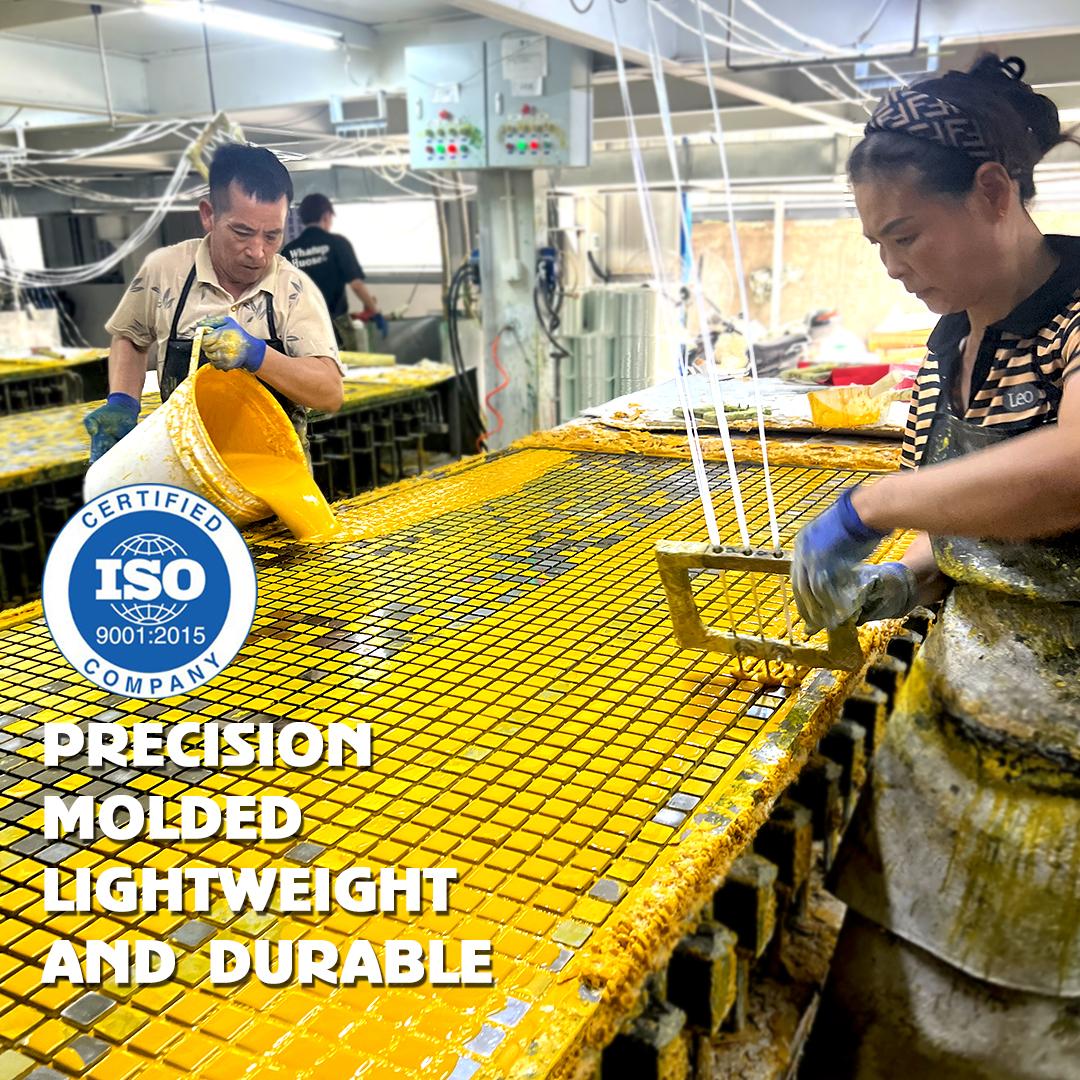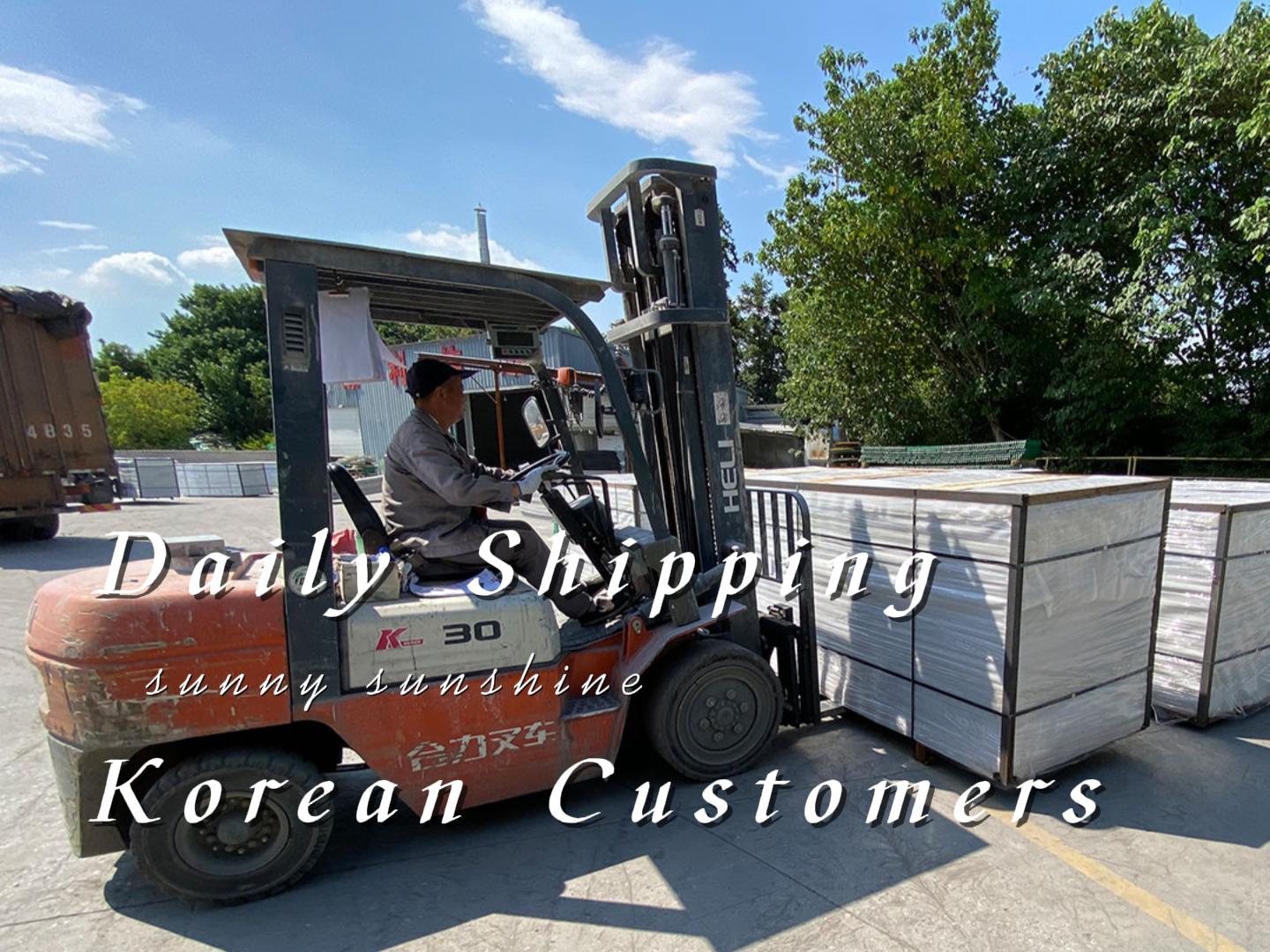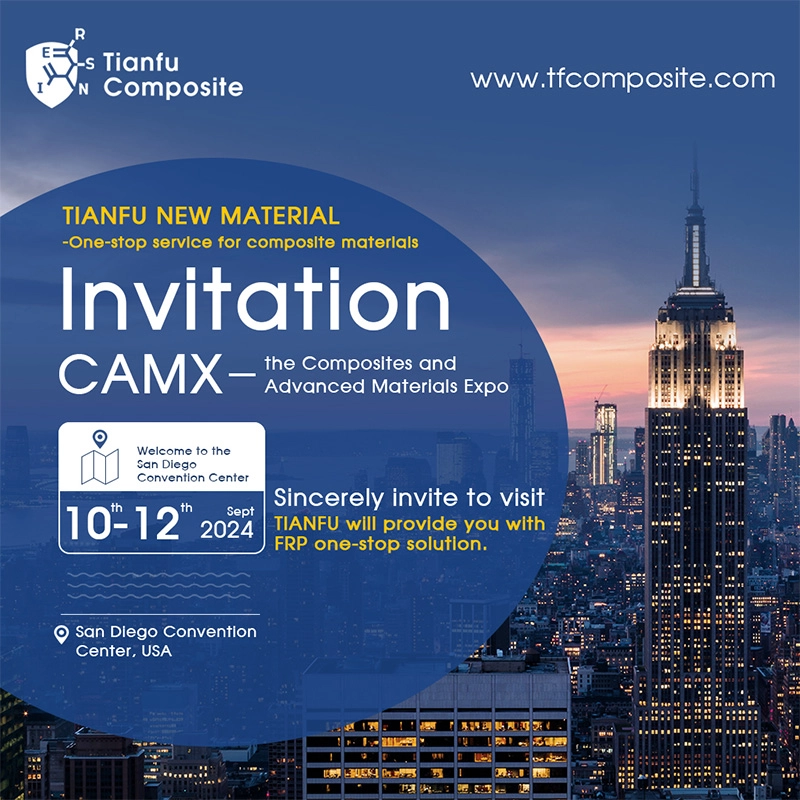The production process of Fibreglass Reinforced Plastic (FRP) grating is a highly specialized procedure that combines advanced composite material technology and engineering. FRP grating is made from a matrix of resin reinforced with fibreglass, offering high strength, corrosion resistance, and lightweight properties. This type of grating is widely used in industries such as chemical plants, wastewater treatment facilities, and offshore platforms due to its durability and performance in harsh environments.
Overview of FRP Grating
FRP grating is preferred over traditional materials like steel or aluminum due to its non-corrosive properties, electrical insulation, and low maintenance requirements. The two main types of FRP grating are:
- Moulded FRP Grating: Created by molding fibreglass and resin in a single operation.
- Pultruded FRP Grating: Manufactured by pulling continuous fibreglass strands through a resin bath and then through a heated die, forming a rigid structure.
In this article, we will focus on the moulded FRP grating production process, as it is the most commonly used method.
Key Stages of FRP Grating Production
- Design and Mould Preparation
- Fibreglass Placement
- Resin Application
- Compression and Curing
- Cooling and Demoulding
- Cutting and Finishing
- Quality Control and Testing
- Packaging and Shipping
1. Design and Mould Preparation
The process begins with designing the grating according to specific customer requirements. Engineers determine the grating type, dimensions, mesh size, and other factors based on the application. Common designs include square or rectangular mesh, and the panel thickness depends on the load-bearing needs.
Mould Design
The mould is one of the most critical parts of the production process. Moulds are typically made of steel or aluminum and come in various sizes to produce gratings of different shapes and thicknesses. The mould has a grid-like pattern that defines the shape and size of the FRP grating.
Before production begins, the mould surface is treated with a release agent to prevent the FRP from sticking to the mould after curing. This ensures a smooth demoulding process and prevents any damage to the finished product.
2. Fibreglass Placement
Once the mould is ready, the next step is to place the fibreglass reinforcing materials into it. These fibreglass strands or rovings are arranged according to the desired mesh pattern.
Layering Process
For moulded FRP grating, fibreglass materials are cut and layered into the mould manually. These fibreglass strands form the structural backbone of the FRP grating. Multiple layers of fibreglass are laid in the mould to provide the required strength and durability.
The placement of these fibreglass layers is crucial for achieving the final strength characteristics of the grating. The layers are placed in a crisscross pattern to enhance structural integrity.
3. Resin Application
After the fibreglass is placed in the mould, resin is applied over the fibreglass to bind the layers together. The resin used in FRP grating is typically a thermosetting polymer such as polyester, vinyl ester, or epoxy, chosen based on the chemical environment and the mechanical properties required.
Resin Types
- Polyester Resin: Offers general corrosion resistance and is widely used in applications that do not require high chemical resistance.
- Vinyl Ester Resin: Provides superior resistance to corrosive chemicals, making it suitable for harsh environments.
- Epoxy Resin: Known for excellent mechanical strength, durability, and heat resistance.
Resin Distribution
The resin is poured or sprayed into the mould, filling the voids between the fibreglass layers. The resin saturates the fibreglass strands, ensuring proper bonding. It’s essential to control the viscosity of the resin to ensure that it flows smoothly and fills the mould evenly. Any air bubbles trapped in the resin can weaken the grating, so care is taken to eliminate them during this step.
4. Compression and Curing
Once the resin has been applied and evenly distributed, the next step is compression and curing. The curing process solidifies the resin, transforming it from a liquid into a solid structure that encapsulates the fibreglass strands.
Compression
A compression machine applies pressure to the mould, forcing the resin to fully saturate the fibreglass layers and form a compact, dense structure. This step ensures that the resin is evenly distributed and that the grating will have the desired strength and durability. The pressure applied is carefully controlled to prevent the resin from being squeezed out of the mould while ensuring proper adhesion.
Curing
The curing process begins when the resin is subjected to heat. Depending on the type of resin used, the mould is placed in an oven or heated area where temperatures can range from 60°C to 150°C. The curing time depends on the resin formulation, the thickness of the grating, and the size of the mould. Typical curing times range from 30 minutes to several hours.
During the curing process, the resin undergoes a chemical reaction that causes it to harden and form a solid matrix around the fibreglass. The heat ensures that the resin cures uniformly, creating a robust composite material.
5. Cooling and Demoulding
After curing is complete, the mould is removed from the oven and allowed to cool. This cooling phase is essential because removing the grating while it is still warm can lead to deformation or other defects.
Once the mould has cooled to an appropriate temperature, the grating is carefully removed from the mould. The use of a release agent applied earlier ensures that the FRP grating can be easily demoulded without sticking or damaging the surface.
6. Cutting and Finishing
Once the FRP grating is removed from the mould, it may not yet be in its final form. The grating is often produced in large panels that need to be cut down to the desired size.
Cutting
High-precision cutting tools such as diamond-tipped saws or waterjet cutters are used to trim the grating panels to the required dimensions. The cutting process is crucial for ensuring that the edges of the grating are smooth and free from any burrs or sharp edges that could pose safety risks.
Finishing
Additional finishing processes may include surface treatments such as adding an anti-slip coating or applying a protective layer to enhance UV resistance. In some cases, the grating edges are sealed to improve durability and aesthetics.
7. Quality Control and Testing
Quality control is an integral part of the FRP grating production process. Manufacturers conduct rigorous testing to ensure that the grating meets the required strength, load-bearing capacity, and corrosion resistance specifications.
Strength Testing
Various tests, such as load testing and impact testing, are performed to determine the grating’s mechanical properties. These tests ensure that the grating can support the necessary loads and withstand external forces without cracking or breaking.
Chemical Resistance Testing
For applications in chemically aggressive environments, the FRP grating is subjected to tests involving exposure to acids, alkalis, and solvents. This ensures that the grating will not degrade or lose strength when exposed to harsh chemicals.
Dimensional Accuracy
The grating’s dimensions, including thickness, mesh size, and panel size, are measured to ensure they conform to customer specifications. Even minor deviations in dimensions can affect the performance of the grating, so precision is critical.
8. Packaging and Shipping
After passing all quality control checks, the finished FRP grating is ready for packaging and shipping.
Packaging
Gratings are typically stacked and packaged using protective materials such as shrink-wrap or foam padding to prevent damage during transit. Each package is labeled with information such as the grating size, resin type, and any special handling instructions.
Shipping
FRP grating is shipped to customers worldwide. Depending on the size and quantity, it may be transported by truck, container ship, or air freight. Proper packaging and handling ensure that the grating arrives at its destination in excellent condition.
Conclusion
The production of Fibreglass Reinforced Plastic (FRP) grating is a highly engineered process that involves multiple stages of design, material preparation, resin application, curing, and quality testing. The result is a lightweight, durable, and corrosion-resistant product that performs exceptionally well in a variety of industrial and commercial applications.
The success of FRP grating lies in its ability to combine the strength of fibreglass with the durability of resin, providing a versatile material that can withstand the harshest environments while remaining easy to install and maintain. This comprehensive production process ensures that FRP grating continues to be a reliable and cost-effective solution for industries worldwide.


